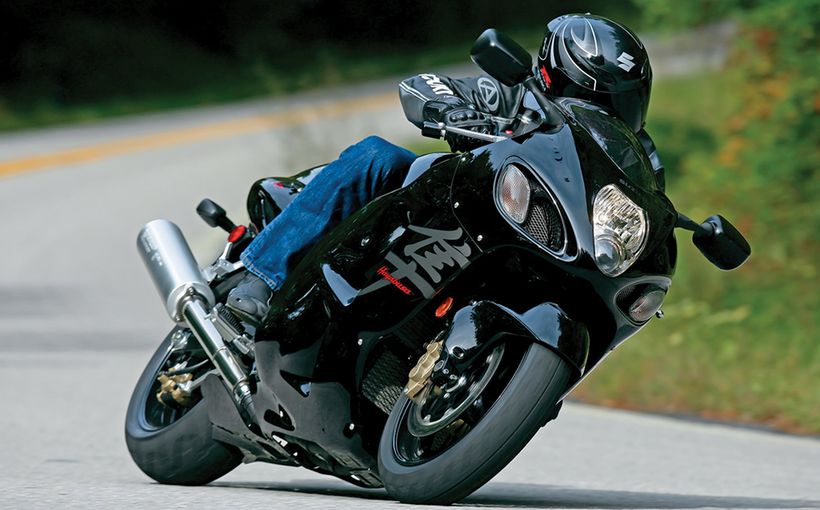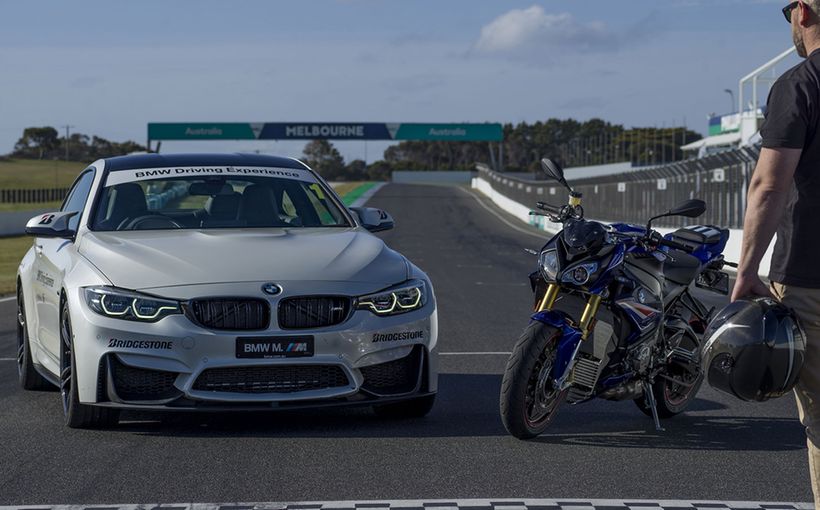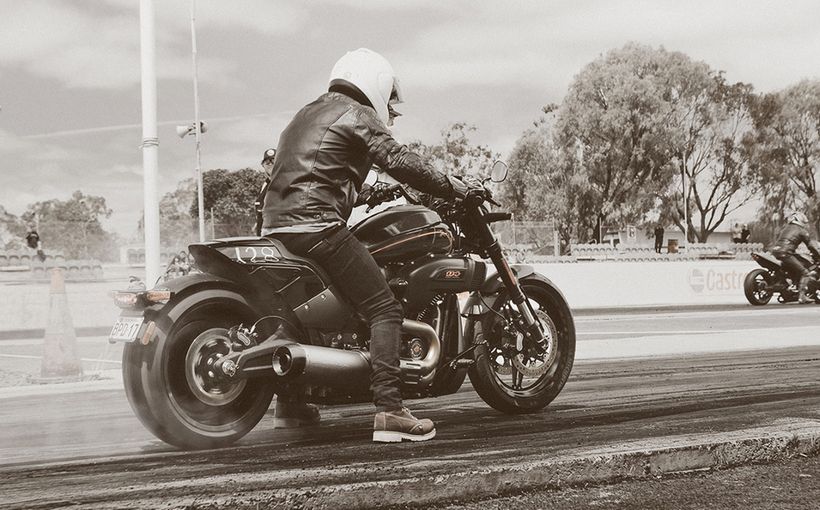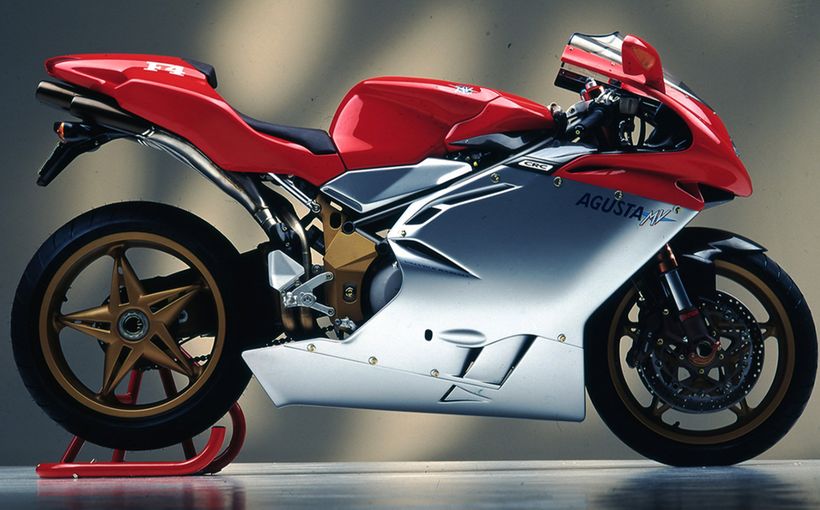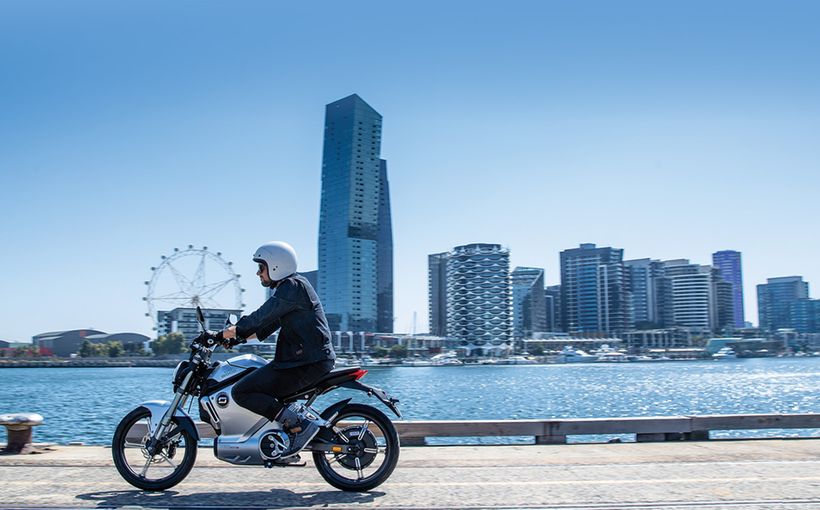Triumph Street Scrambler: Dirty Deeds

Forget the Thruxton, the Bonneville or even the Bobber The best bike in Triumph's retro range is the Street Scrambler. Here are five reasons why.
1). IT’S BASED ON THE STREET TWIN
As its name suggests, the Street Scrambler is based on Triumph’s entry-level retro bike. That means it already boxes well above its weight with a punchy 900cc ‘High Torque’ parallel-twin engine, slick running gear, quality fit and finish, great roadholding and an overall sense that the bike shrinks around you.
Like its sibling, the Street Scrambler is an outstanding, thoroughly engineered modern motorcycle that just happens to be draped in taut, semi-retro styling. That visual simplicity and attention to detail we’ve become familiar with is all there, too. That includes hiding its ugly modernity, including the catalytic converter, oxygen sensor, brake fluid reservoirs and radiator coolant bottle and associated plumbing.
In tight spaces and stop-start crawls, the Street Scrambler takes it all in its stride. It’s nimble, neutral and its generous steering lock gives a nice, tight turning circle. It’s simply easy. Likewise, it’s easy when you bank it over through bends thanks to its easy ergonomics and high, wide ’bars for leverage.
You might initially think a $2550 premium is a bit exxy for the rugged look ($15,900 plus on-road costs), especially when you consider its price isn’t too far from BMW’s 1200cc R NineT Scrambler (from $19,150). But the upgrades from the Street Twin add up to good value. These include a revised chassis (with forward-mounted ’pegs), longer-travel suspension, bigger wheels with Metzeler Tourance dual-purpose tyres, a more upright riding position, those trademark high pipes as well as switchable ABS and traction control, to name a few.
A deeper delve reveals the same outputs of 40.5kW (54hp) at 5900rpm and 80Nm but, in the Scrambler, that peak torque arrives some 350rpm sooner, at 2850rpm. Remember, too, that the Scrambler inspiration kit for the Street Twin costs $3122.32 (totalling $16,472) and its high Vance & Hines pipe turns the bike into a solo.
In short: It’s born of champion bloodlines.

2). IT’S BETTER THAN THE OLD SCRAMBLER
You might’ve noticed we described the Street Scrambler as a semi-retro bike because, when you compare it to the old model, it really makes it look, well, old. We liked the old girl because it oozed rugged charm, it offered more brute than the Bonneville of the time (thanks to its 270-degree firing interval) and it had a roomier ride position.
We had the opportunity to compare the old with the new at the launch of the Street Scrambler and, although it offered a nostalgic experience, the technological advances of the latest bike smack you in the face. It’s considerably less top-heavy (27kg lighter), its lever pull is much lighter, its gearbox is smoother and, thanks to its crisp fuelling and that 900cc engine, its performance can only be described as like night and day. Specifically, the Street Scrambler offers almost 30 per cent more power and torque, and all of it is delivered in the real-world riding range (2750-4750rpm).
Yes, it’s less retro and less McQueen, but the Street Scrambler has moved on from playing old Scrambler’s faded trump card. In fact, it’s probably fair to say Triumph was resting on its laurels when it developed the old model because it was ahead of its time and had next to no competition. Thank goodness scramblers are now popular.
In short: It’s lighter, more nimble and considerably quicker. In fact, it’s better in every way.
3). IT RIPS ON THE ROUGH STUFF
If you ever rode the old model in the standing position then you’d know how compromised it was. It was just plain uncomfortable from those signature high pipes and round, classically styled rubber-coated ’pegs. In fact, those pipes forced you to bow your right leg out and anchor your foot on the end of the ’peg. Then there was the heat from the pipes, ever-ready to cook your tender thigh. Even the ’bars weren’t really set up for stand-up work.
It’s still not perfect in the standing position and your right leg still needs a slight bow, but it’s much narrower and better than before. Heat is no longer a problem either and you can kind of get your weight over the ’bars. Kind of. Still, it’s better than the
R NineT Scrambler is this regard.
As for conquering the rough stuff, it’s also still a relatively heavy scrambler, not a lightweight and long-legged dirt bike, so don’t get too carried away. But it is surprisingly capable. Fire trails and chopped-up logging tracks are well-suited, and you’ll have no difficulty with most creek crossings. Helping here are switchable traction control and ABS systems, that newfound mass centralisation, roomy, ADV-style footpegs with removable rubber inserts (and matching brake pedal) and the aforementioned Metzelers, which somehow manage to find traction, despite their road-going bias.
Like many enthusiasts, I was initially disappointed to learn the bashplate wasn’t made of aluminium but, although it’s plastic, it is pretty thick.
In short: It doesn’t mind getting dirty, just like that girl in high school. To an extent, its capability is only limited by your ability.

4). IT RIPS ON THE ROAD
This is where most Street Scramblers will live and the experience won’t disappoint. The sitting ergos are bang-on, with a high, wide handlebar for effortless leverage and that sense of narrowness still gives a good leg lock. Its seat is much lower than before, too. The suspension is basic and non-adjustable, but it handles bumps well, keeping its composure and staying on track.
The fork and shocks have been lengthened by about 25mm which, combined with the 19-inch front wheel and 17-inch rear, give a little extra ground clearance over the Street Cup. The fork retains the same springs and 120mm of travel as the Street Twin and racier Street Cup models, but it has revised compression and rebound damping. But don’t for a moment think it’s lazy to tip into a corner or change direction – it loves that stuff.
That near-horizontal torque curve translates to an enjoyable torque-rich engine. It has good low-down muscle without the need for excessive revs. Perfect for around town. It sounds meaty, too, but the bark that emits from the Vance & Hines pipe is worth the $1583.
The front brake, strong and progressive, is a one or two-finger affair (just like the clutch), and that’s despite a single-disc set-up. Both levers offer reach adjustment. There’s also a USB input under the seat to charge your phone, and the bike should be cheaper to run with a larger oil capacity (3.2L) and longer, 16,000km service intervals.
In short: It bangs.

5). IT LEAVES THE DUCATI FOR TRENDIES
Let them stick to trendy tattoos, trendy riding gear and hashtag-everything trendy riding. Okay, in fairness to Ducati, we’ve yet to ride the Scrambler Desert Sled, which looks like a serious piece of kit, and the regular Scrambler range nails its brief as a fun and friendly bike, which is why it’s such a success. But if you want faster fun with a bit of Old Blighty...
In short: Style is subjective, but not when it comes to performance.
So there you have it. The Street Scrambler, the third member of the Street family – fourth if you include the mechanically similar T100 – and seventh modern-retro model in Triumph’s latest line-up. What will it bring out next? It’ll be interesting to see how popular the Desert Sled gets. If it goes gangbusters then hopefully we’ll see a 1200cc big-dog Scrambler from Triumph with more off-road capability. Now that would be something. Any other requests? •
SPECS: TRIUMPH STREET SCRAMBLER
ENGINE:
TYPE: Liquid-cooled, four-valve per cylinder, parallel twin with 270-degree crank angle
CAPACITY: 900cc
BORE & STROKE: 84.6mm x 80mm
COMPRESSION RATIO: 10.5:1
FUEL SYSTEM: EFI
TRANSMISSION:
Type: Five-speed
Final drive: Chain
PERFORMANCE:
POWER: 40.5kW (54hp) at 5900rpm
TORQUE: 80Nm at 2850rpm
CHASSIS & RUNNING GEAR:
FRAME: Tubular steel cradle
FRONT SUSPENSION: 41mm KYB, 120mm travel
REAR SUSPENSION: Twin KYB shocks with adjustable preload, 120mm travel
FRONT BRAKE: 310mm disc with twin-piston Nissin floating caliper, ABS
REAR BRAKE: 255mm disc with twin-piston Nissin floating caliper, ABS
WHEELS & TYRES:
WHEELS: 19 x 2.5-inch (f), 17 x 4.25-inch (r) multi-spoke
TYRES: 100/90-19 (f), 150/70-17 (r), Metzeler Tourance
DIMENSIONS & CAPACITIES:
DRY WEIGHT: 206kg (claimed)
SEAT HEIGHT: 792mm
WHEELBASE: 1446mm
FUEL CAPACITY: 12 litres
OTHER STUFF:
PRICE: From $15,900 (plus on-road costs)
COLOURS: Jet Black, Matt Khaki Green, Korosi Red and Frozen Silver
WARRANTY: Two years, unlimited kilometres
TriumphMotorcycles.com.au




